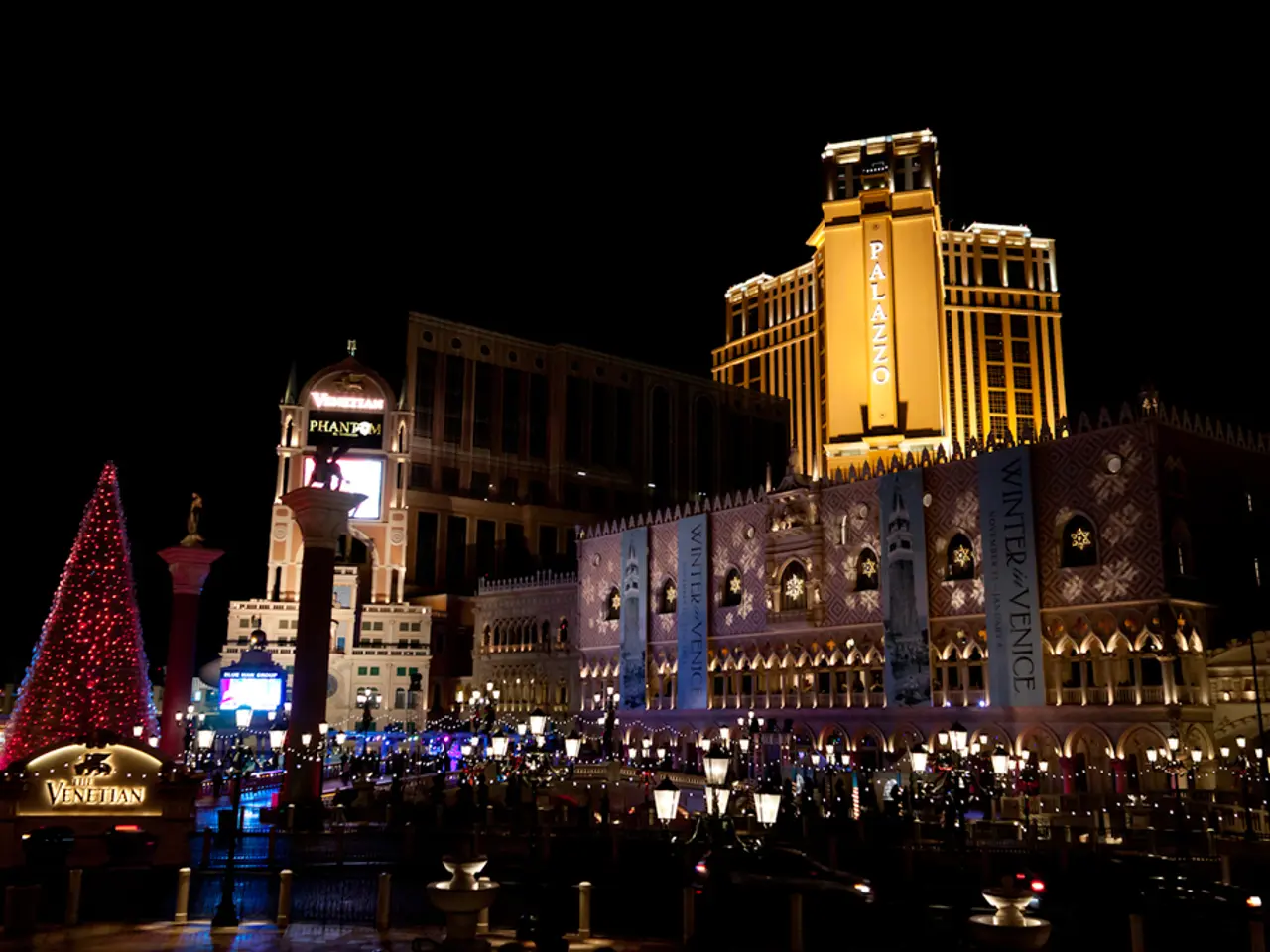A Hour in St. Petersburg: Putin Talks Arms, But Not Ukraine - A Fresh Take
Discusses Armaments, Pays No Heed to Ukraine Situation (as related by Putin)
Hey there! Let's dive into the latest buzz from St. Petersburg, Russia. meets political drama as President Vladimir Putin took the stage at the International Economic Forum. While some were anticipating a discussion on the ongoing conflict with Ukraine, the content of his speech took a different turn.
Putin, with his sights set on further developing Russia's defense industry as a cornerstone of the domestic economy, called for the integration of combat experience in the development of weapons. Oddly enough, the war against Ukraine, which was highly anticipated to be a topic, was left untouched during the nearly hour-long speech. The war discussion was saved for the Q&A session.
Interestingly, Putin believes that Russia needs to break free from the traditional division between civilian and purely defense companies and move towards a combined approach. "We must constantly analyze and quickly introduce technological and organizational innovations in the civilian sector into the defense and security sphere," he said during a plenary session of the forum. He also announced Russia's plans to develop defense projects together with friendly countries, produce weapons jointly, and train the relevant personnel.
Drawing a positive picture of Russia's economic development, Putin highlighted that the gross domestic product grew by more than four percent each of the past two years, not solely attributed to defense production. With inflation falling to 9.6 percent, he emphasized that stagnation or even recession must not be allowed.
However, there seem to be differing opinions among Russian leaders on the best approach to boost the economy. Economy Minister Maxim Reshetnikov warned that Russia may be on the brink of recession, blaming high interest rates and the central bank for many companies' financial difficulties.
Behind the Scenes: The Impact of Military Spending on the Economy
Since 2021, Russia has significantly increased its military expenditure. Defense spending has skyrocketed from 3.6% of GDP in 2021 to about 6.3% and is projected to reach even higher figures, surpassing the United States’ defense spending share by 2025. The defense budget alone for 2025 is estimated at 13–15 trillion rubles (approximately $160 billion), making it the backbone of Russia’s economic policy amid the conflict with Ukraine.
The massive military spending is financed through various means, including tax hikes, withdrawals from the National Wealth Fund, and profits from state-owned banks, at the expense of the economy and social spending. The government has cut social spending significantly, including a reduction of 1.4 trillion rubles in transfers to pensions and social insurance funds.
Pushing the Limit: Military Capabilities and Economic Risks
The emphasis on defense spending results in intensive force generation and technological adaptation efforts for the conflict in Ukraine. Russia is doubling its recruitment rates and actively restructuring its military forces to counter UAV threats by creating specialized groups. The defense industry is working on anti-drone technologies, electronic warfare enhancements, and developing new drones.
In addition, Russia is fostering domestic production of military equipment by reducing reliance on foreign technologies, such as limiting the use of foreign cloud servers. It has reportedly recruited Ukrainian teenagers in occupied territories to produce strike drones, indicating a militarized mobilization of resources and personnel beyond traditional military channels.
The militarization, however, is taking a heavy toll on Russia’s economy. The defense sector is operating near capacity, limiting further expansion. The economy is hampered by high inflation, elevated interest rates, and constrained consumption. Declining oil and gas revenues, combined with sanctions, further erode fiscal space and foreign investment.
The war-driven economic model prioritizes short-term military strength at the expense of long-term economic sustainability. Core productive sectors, social services, and innovation are neglected, risking the erosion of economic foundations and societal resilience. This creates a fragile "war economy" that hides instability through extensive state spending but faces mounting structural imbalances, high inflation, and limited fiscal options.
Sources: ntv.de, ses/dpa/AFP, [1], [2], [3], [4], [5]
- Ukraine conflict
- Russia
- Vladimir Putin
- St. Petersburg
- Defense industry
- War economy
- Military spending impact
- Economic sustainability risks
[1] "Russia’s defense budget: Fueling war and undercutting economic modernization." Carnegie Endowment for International Peace, 2022. [2] "Russia’s Economic Challenges and the Role of Defense Spending." International Monetary Fund, 2022. [3] "Russia’s Defense Industry: Current Status and Future Prospects." Defense Industry Daily, 2022. [4] "Russia’s military modernization and its impact on Europe and NATO." German Marshall Fund of the United States, 2022. [5] "Russia’s war economy and its vulnerabilities." Brookings Institution, 2022.
- The ongoing conflict in Ukraine remains a significant topic in the economic and political landscape, particularly with regards to Russia's defense industry, which has seen significant growth as a result of increased military spending.
- The economic and monetary union of Russia, as evidenced by President Putin's speeches and policies, is increasingly being influenced by the defense sector, creating a 'war economy' that prioritizes short-term military strength over long-term economic sustainability.




